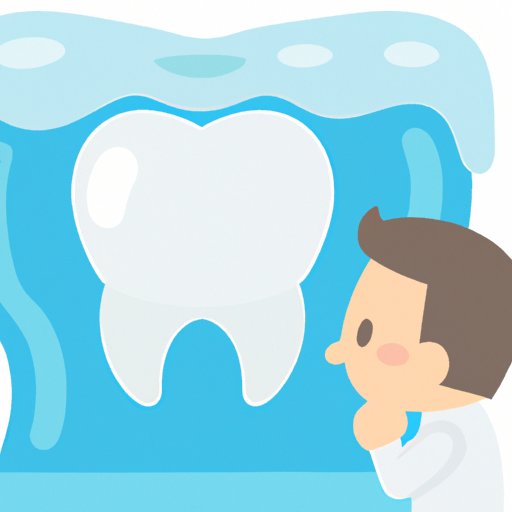
Introduction
Cavities are one of the most common dental problems people face. Unfortunately, they can be difficult to spot, even when they have reached an advanced stage. This can make it harder to get prompt treatment, leading to bigger problems down the line. In this article, we will discuss the reasons why cavities can be hard to see, and what you can do to identify them before they become a bigger issue.
Unseen Dangers: Why You Can’t Always Spot Cavities and What You Can Do About It
One of the main reasons why it can be difficult to detect cavities is their location. Cavities form in the nooks and crevices on teeth, making them harder to see without proper lighting and tools. Also, the size of the cavity can play a role in whether it’s easily visible. Smaller cavities may be hidden away, and harder to detect until they’ve grown significantly in size.
To combat this problem, dentists use mirrors, lights, and magnifying glasses to inspect teeth. This equipment provides better visual access to tight spaces and can reveal even minor signs of damage. For those who want to check for cavities at home, a good mirror with decent lighting is recommended. By shining a light on the teeth and inspecting them using a mirror, you can look for small signs of decay that might be missed with the naked eye.
The Truth About Detecting Cavities: Can You Really See Them?
Many people have some misconceptions about spotting cavities visually. For starters, cavities don’t always present as significant dark spots or holes in the teeth. They can be subtle variations in tooth color, making minor decay hard to recognize. The location of a cavity will also play a role in its visibility. Teeth with deep grooves and molars can often harbor hidden decay that isn’t easy to find on your own.
Thus, for proper diagnosis, you should visit a dentist who has experience and equipment like X-rays for a detailed check-up of your teeth. Dental professionals use special instruments, lights, and X-rays to detect cavities. An intraoral camera is also a valuable tool since it helps to magnify the images and see things that may be missed during a visual inspection.
How X-rays Can Help Reveal Hidden Cavities in Your Teeth
While X-rays have been used to detect cavities for many years, there are still those who worry about their safety. However, dental X-rays nowadays use low doses of radiation, and in most cases, the benefits of detecting cavities early outweigh any potential risks. In fact, X-rays are an essential tool in finding cavities because they help to spot cavities between teeth, beneath fillings, and under grooves in teeth that are invisible with a naked eye. This is important because waiting for cavities to cause pain before getting treatment can cause extensive damage that may be harder (or more expensive) to fix in the future.
The Surprising Signs of Cavities: Beyond the Obvious Toothache
While tooth pain is a surefire sign of cavities, there are other symptoms that may present themselves too. For instance, sensitivity to hot or cold foods or drinks can be a sign that your enamel is compromised. Also, tooth discoloration and visible stains or holes can signify tooth decay. If you notice any of these symptoms, visit a dentist to ensure proper diagnosis and treatment. Early detection and treatment will save you a lot of money and dental issues over the long run.
Preventing Cavities Before They Become Visible: Tips From a Dental Expert
Prevention is always better than cure. Thankfully, there are several ways to prevent cavities before they become visible. Brushing your teeth twice a day with fluoride toothpaste and flossing daily can help remove bacteria and plaque from your teeth, preventing them from forming into cavities. Drinking water instead of sugary drinks and avoiding sugary snacks, which contribute to tooth decay, are also good preventive measures. Most importantly, visiting a dentist regularly for professional cleanings and regular checks help catch cavities early on, preventing them from getting bigger and painful over time.
Conclusion
Preventing cavities and maintaining good dental hygiene can help you avoid the pain and expense of dental procedures. By being aware of the various ways in which cavities can form, and how to detect them early on, you can take better care of your teeth. Remember to brush and floss daily, avoid sugary drinks and snacks, and visit a dentist regularly.
Take responsibility for your dental health, and don’t put off seeking treatment. Your teeth will thank you in the end.





